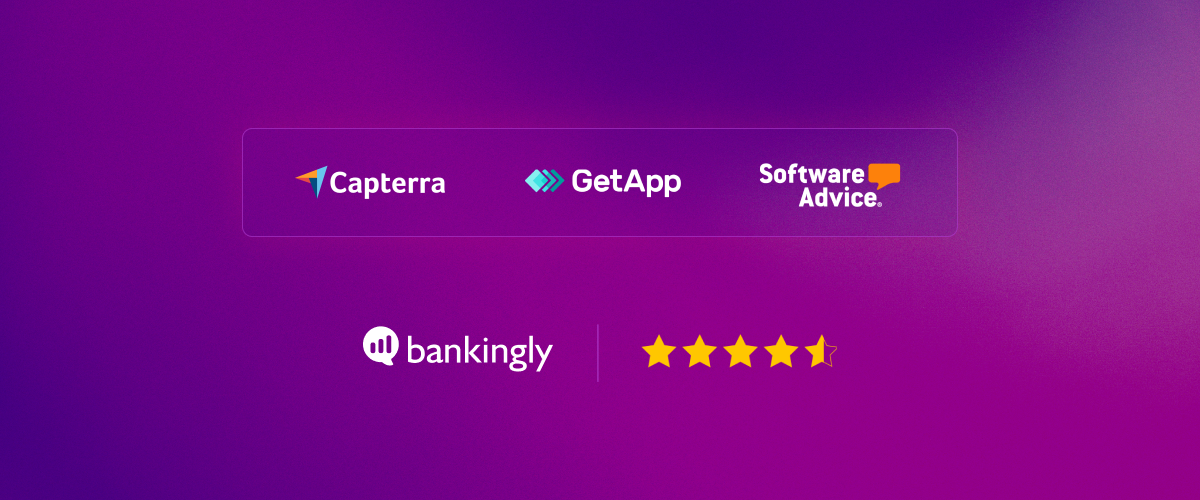
Financial Inclusion – What are the risks, opportunities, and challenges?
Financial inclusion can provide immense economic and social benefits by allowing those previously excluded to participate in the global economy.
The term 'financial inclusion has been used a lot lately, thanks to the transformative power of fintech, i.e., using digital channels and mobile technology from providers such as Bankingly to provide essential financial services to underserved populations in emerging countries, poorer sections of society and those with limited resources or low levels of literacy. This blog post will explore the risks, opportunities, and challenges involved.
According to the World Bank's Global 2021 Findex report, more than 1.4 billion adults worldwide have no access to formal banking channels, financial products and services, transactions, payments, savings, credit, and insurance, to name a few.
Risks associated with financial inclusion
The provision of formal banking services to underserved populations has the potential to alleviate poverty and stimulate economic growth. However, associated risks must be identified and managed for these initiatives to succeed.
1. Consumer protection risks: When low-income consumers are given access to financial products and services for the first time, they may not have the knowledge or understanding to make well-informed decisions about using these products. This can lead to them falling prey to scams, unscrupulous lenders, or poor financial decisions that cost them more in the long run. Therefore, financial education, strong awareness, proper onboarding, training, and protection measures are put in place before they are given access.
Other consumer risks are fraud, identity theft, or misuse of funds. As more individuals gain access to financial services, the potential for abuse increases. For example, suppose funds are not properly audited and managed, there is a greater risk of corruption or money laundering that involve transferring large sums of money from one country to another without scrutiny. As a result, governments and organizations need to ensure proper safeguards and strong eKYC are in place to minimize these risks. Digital banking solution providers like Bankingly offer reliable and secure eKYC services that can assist in achieving this goal.
2. Operational risks: Financial inclusion initiatives often involve working with new partners and intermediaries, leading to increased operational, legal, fraud, and reputational risks. Therefore, due diligence must be carried out on all new partners and intermediaries before entering into agreements.
3. Strategic risks: As with any new initiative, there is always a risk that not all financial inclusion initiatives will succeed. This could be due to incorrect target market selection, poor market timing, unrealistic expectations, major regulation changes, and inadequate planning and execution. Therefore, it is essential to consider all these factors before embarking on any financial inclusion initiative.
4. Financial risks: Banks may not be able to accurately assess whether borrowers can make regular payments on loans or mortgages due to a lack of data or resources available in certain areas or countries. If borrowers default, this could have serious implications for lenders and borrowers alike as it could lead to higher loan losses for lenders, leading to increased interest rates for lenders to recoup their losses.
Additionally, some experts worry that the increased availability of credit cards/BNPL, predatory lending apps, could lead consumers into debt if they cannot pay off their balances in full each month due to high-interest rates with these products.
Opportunities.
Financial inclusion also offers opportunities for individuals and organizations alike. For example, by providing essential banking services such as savings accounts or microloans, individuals can build up their credit scores over time and become eligible for larger loans at better rates.
When it's easier for hundreds and millions more people to access essential financial services such as savings accounts, credit cards, mortgages, microcredit, and loans, the ability to sell and receive money from anyone, anywhere, can help them achieve their goals. In addition, financial inclusion can lead to economic growth by increasing consumer spending, investment opportunities, job creation, tax revenue for governments, and opening up the economy.
Additionally, organizations that promote financial inclusion can benefit from increased donations and trust amongst their customers due to their focus on social responsibility initiatives.
Financial inclusion also has social benefits, as it can reduce poverty and inequality in countries where these issues are prevalent. By providing access, people can save, which they can then use for healthcare through insurance, education, or business opportunities. This can help them break out of the cycle of poverty and improve their quality of life significantly.
Challenges.
Despite the many benefits and potential associated with financial inclusion, some challenges, such as inadequate infrastructure, cultural barriers, and high costs, still need to be addressed before they can become widespread across all regions. For instance, many developing countries lack adequate infrastructure, such as reliable electricity; limited and expensive broadband/4G internet, making it difficult for individuals to access essential banking services or securely make online payments.
Sometimes cultural norms, religious beliefs, old habits (such as preference towards cash and money lenders), misconceptions, or mistrust towards digital banking may prevent certain users from taking full advantage of new technology.
Finally, high costs associated with providing these services may keep organizations from investing in them. Fortunately, digital banking solution providers like Bankingly offer flexible pricing models based on the number of monthly active users on its Web & Mobile Banking solutions.
Conclusion.
Financial inclusion has risks and opportunities; however, when done correctly, it can provide immense economic and social benefits by allowing those previously excluded from mainstream markets to participate in the global economy.
To address these issues, governments must invest more, and improve regulation, so businesses have a greater incentive to boost financial inclusion. By doing so, it ensures everyone can improve their lives.
Are you looking for a strategic digital banking solutions partner for better outcomes, minimizing risks, overcoming challenges, and tapping into opportunities? Bankingly does just that. It helps SME financial institutions from emerging markets and empowers millions of their customers every day. Let's talk!
 Back
Backto top



